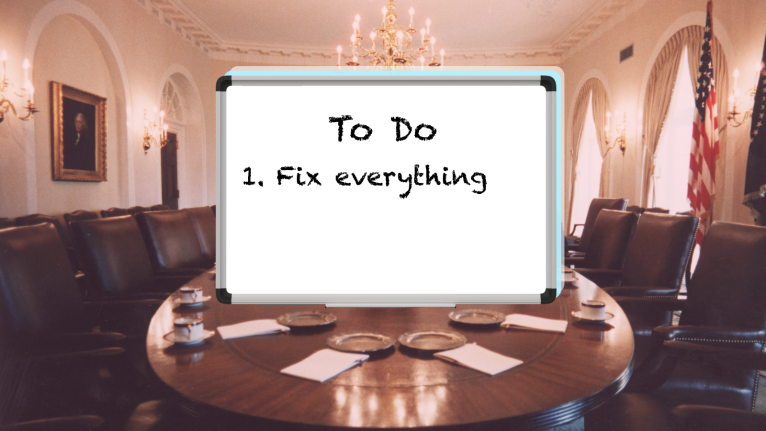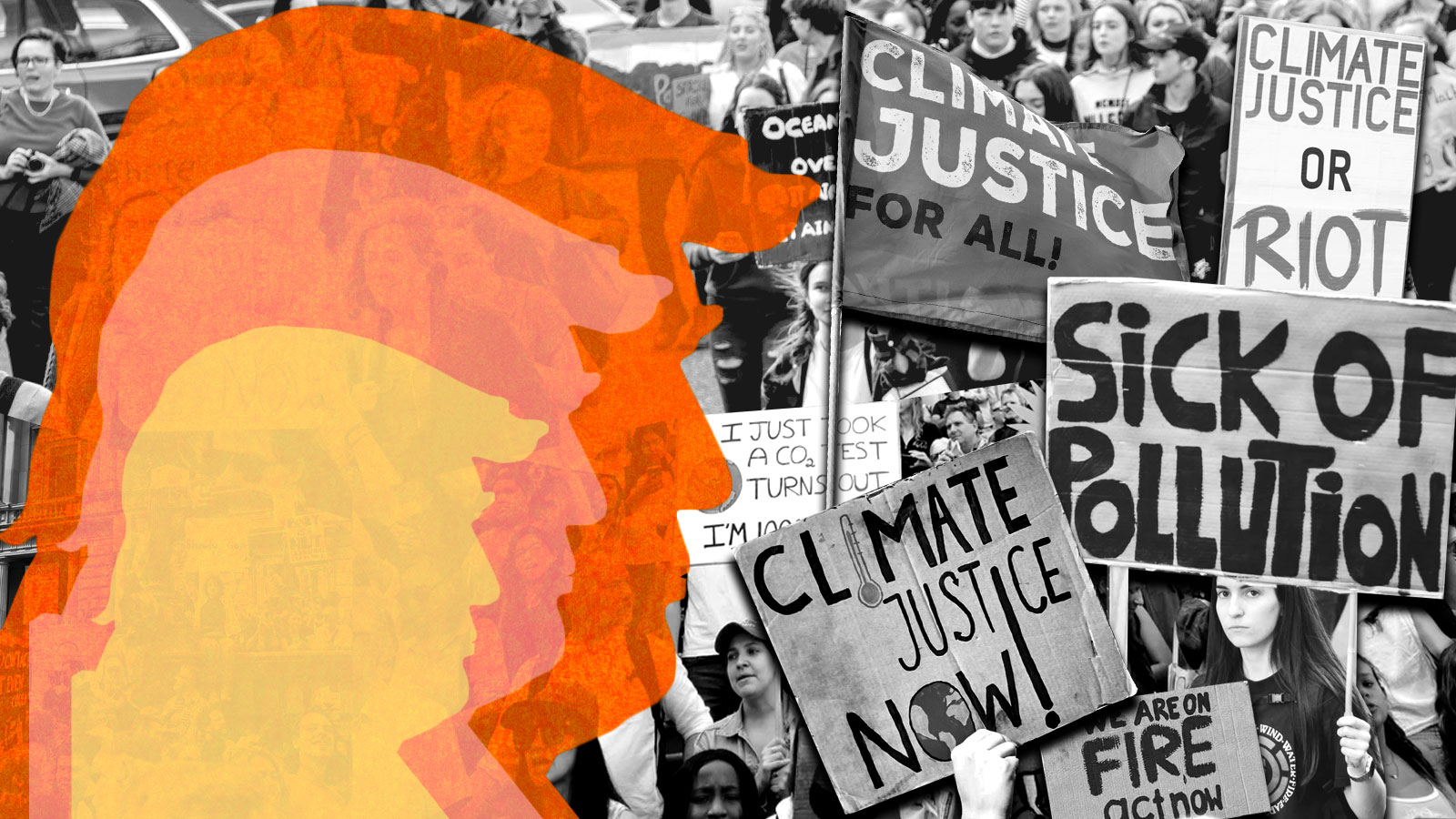When President Donald Trump moved into the White House in early 2017, those worried about the quickening pace of climate change had every right to be terrified. After all, on the campaign trail, Trump had hollered about pulling out of the Paris climate agreement and reviving the coal industry, as well as banning Muslims from entering the United States and “locking up” Hillary Clinton.
It wasn’t just bluster. Trump tried to do all of that, and much more. The former reality TV star and real estate mogul, with his thumb hovering over the “Tweet” button, presided over a frenetic presidential term marked by impeachments, walls, and travel bans — four years that were as poisonous for the country as they were for the climate.
Under Trump and his polluter-friendly appointees, the Environmental Protection Agency rolled back hundreds of rules intended to clean up the country’s air and water and curtail greenhouse gas emissions — which could result in almost 1.8 billion metric tons of extra carbon dioxide flowing into the atmosphere over the next 15 years. (That’s equivalent to one year’s worth of emissions from the country’s power generation.) Trump made good on his campaign promise, making America the only country in the world to abandon the landmark Paris Agreement after adopting it, ceding the international stage to players like the European Union and China. And all this amid three of the top five warmest years on record, record-breaking hurricanes, and devastating wildfires.
To be sure, past Republican presidents also loosened many environmental protections. But they didn’t do it on the same scale as Trump. “Trump’s appointees were more openly contemptuous of environmentalists than any Republican environmental appointees at least since Ronald Reagan,” said Adam Rome, an environmental historian at the University at Buffalo. Trump didn’t just destroy environmental protections — he bragged about it, while calling climate change a hoax created by China, saying “It’ll start getting cooler, you just watch,” and giving the green light to controversial oil drilling and pipeline projects.
With Trump expected to leave office on Wednesday, President-elect Joe Biden has promised to return to the Paris accord on his first day in office. But clearing up the rest of the damage will take time. And time, unfortunately, is in short supply. To avoid warming of more than 2 degrees Celsius or (3.6 degrees Fahrenheit), as required by the Paris Agreement, the U.S. needs to zero out its emissions by the year 2050. According to one analyst, before Trump, the U.S. would have needed emissions to drop 4.5 percent each year to reach that goal; after Trump, it will be more like 5.5 percent. The difference isn’t trivial: In a world where it took a devastating pandemic to cut the world’s emissions by only 7 percent last year, every metric ton of CO2 matters.
Trump, however, will leave another legacy behind when he departs the White House. In the past four years, climate activism has catapulted into the mainstream. Riding on the waves of what has been called the “American resistance” movement against Trump, it went from a movement associated with pipeline protests, university divestment, and more niche concerns to grabbing major headlines. Youth-led activist groups like the Sunrise Movement and Zero Hour sprang up seemingly overnight — staging marches, occupying Congressional offices, and confronting presidential candidates. Abroad, a Swedish teenager named Greta Thunberg began skipping school on Fridays to protest the lack of action on global warming, inspiring teenagers around the world to do the same. In London, thousands of protestors from “Extinction Rebellion” stopped traffic, chained themselves to fences, and brought Tube stations to a screeching halt.
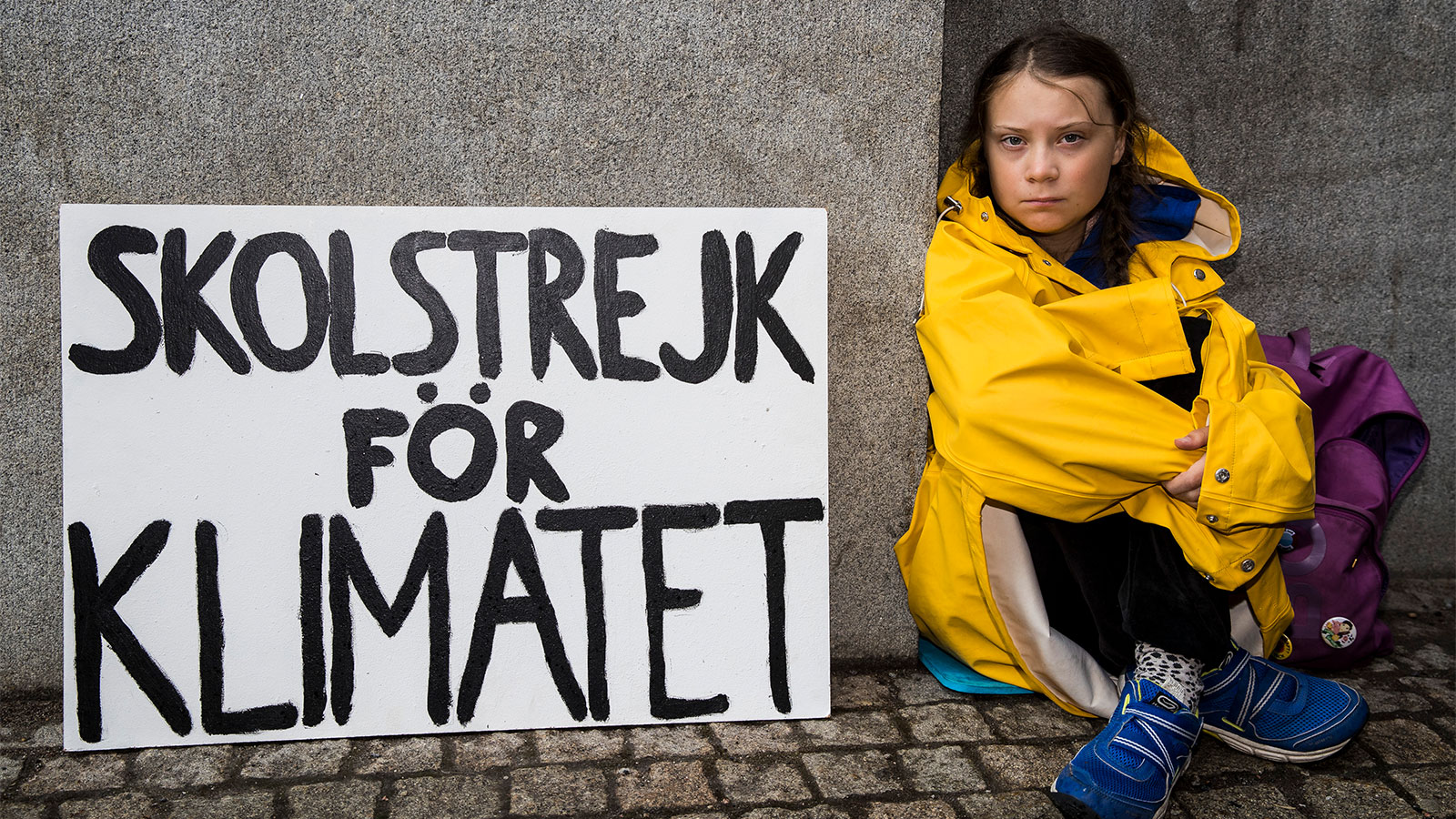
Greta Thunberg sits outside of the Swedish parliament building to raise awareness for climate change on August 28, 2018. MICHAEL CAMPANELLA / Getty Images
Not that all of this activism was simply a backlash against Trump. Raging wildfires, record-breaking hurricane seasons, and scorching heat waves have also vaulted climate change into the public’s consciousness. But it’s hard to imagine it occurring without him. “When a political system is in place that is not open to people to push for change from within the system, they go outside of it,” said Dana Fisher, a professor of sociology at the University of Maryland. “They march in the street, they yell in the street, they do sit-ins. It makes a lot of sense when you have an administration that doesn’t even acknowledge that climate change is real.”
Now, however, these newly emboldened activists are facing a new reality: What will happen to the movement when the world’s loudest climate denier is no longer in the White House?
Natalie Sweet’s first-ever protest was the Women’s March in Washington, D.C., the pink-hatted national rally held the day after Trump’s inauguration in 2017. Sweet was in eighth grade at the time and drove to the protest from New York City with her family.
She was already starting to get political. “What Trump’s election did for me was show how high up racism and prejudice can be in politics,” she said. “That really propelled me forward.”
Sweet, now 17, serves as the communications director for Zero Hour and is emblematic of many teenagers who spent their high school years protesting Trump. Most got their first taste of politics at the Women’s March or at the March for Our Lives — the massive demonstrations against gun violence held in the wake of the school massacre in Parkland, Florida — then pivoted to protesting inaction on global warming. “They were the first children of ‘the resistance,’” Fisher said. “They came out originally around other issues but then started to see the importance of climate change.”
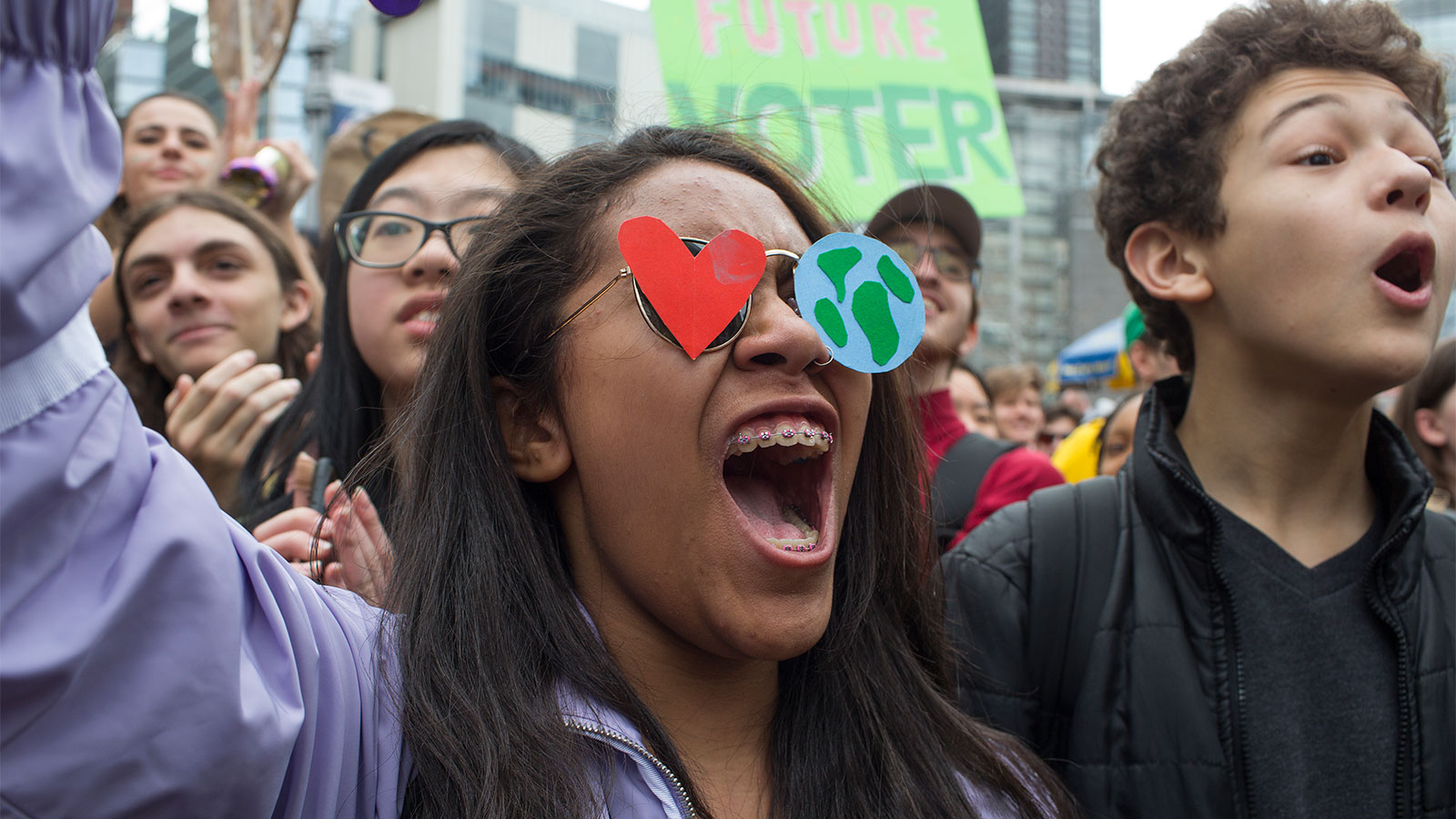
High School students walk out of classes to protest climate change and the government’s inaction on March 15, 2019, in New York City. Andrew Lichtenstein / Corbis via Getty Images
Young people turned to protest as they started to believe that the political system was failing them, said Hava Gordon, an associate professor of sociology at the University of Denver. Before Thunberg was famous, back in the summer of 2018, she was just a lone teenager protesting outside the Swedish Parliament. She went on to inspire millions of young people worldwide to skip school and take to the streets, cursing about climate change (“Maybe if it was called ‘Father Earth’ you’d actually give a shit!” one protest sign read) and calling for urgent action.
Gordon said they didn’t want to “wait their turn” to have a voice in politics — and that the dysfunction of the Trump administration had revealed that waiting wasn’t an option anyway. So they adopted an attitude of “‘we’re not gonna wait to be acculturated into this political machine, because it’s totally broken.’”
In some ways, these protests mirrored those in the past, with calls to “listen to the science,” giant blow-up Earth balloons, and signs about saving polar bears. But the most recent demonstrations have also been markedly different, shaped by concerns that go well beyond climate change and the future of Arctic sea ice. The new generation doesn’t just want to stop global warming — they want a plan that creates millions of jobs and builds a new, non-polluting economy. In 2018, activists with the Sunrise Movement held a widely covered sit-in in the office of House Speaker Nancy Pelosi, demanding a “Green New Deal” — a legislative agenda that would cut carbon emissions while also providing jobs to every American, a $15 minimum wage, and universal health care. The idea soon turned into a rallying cry.
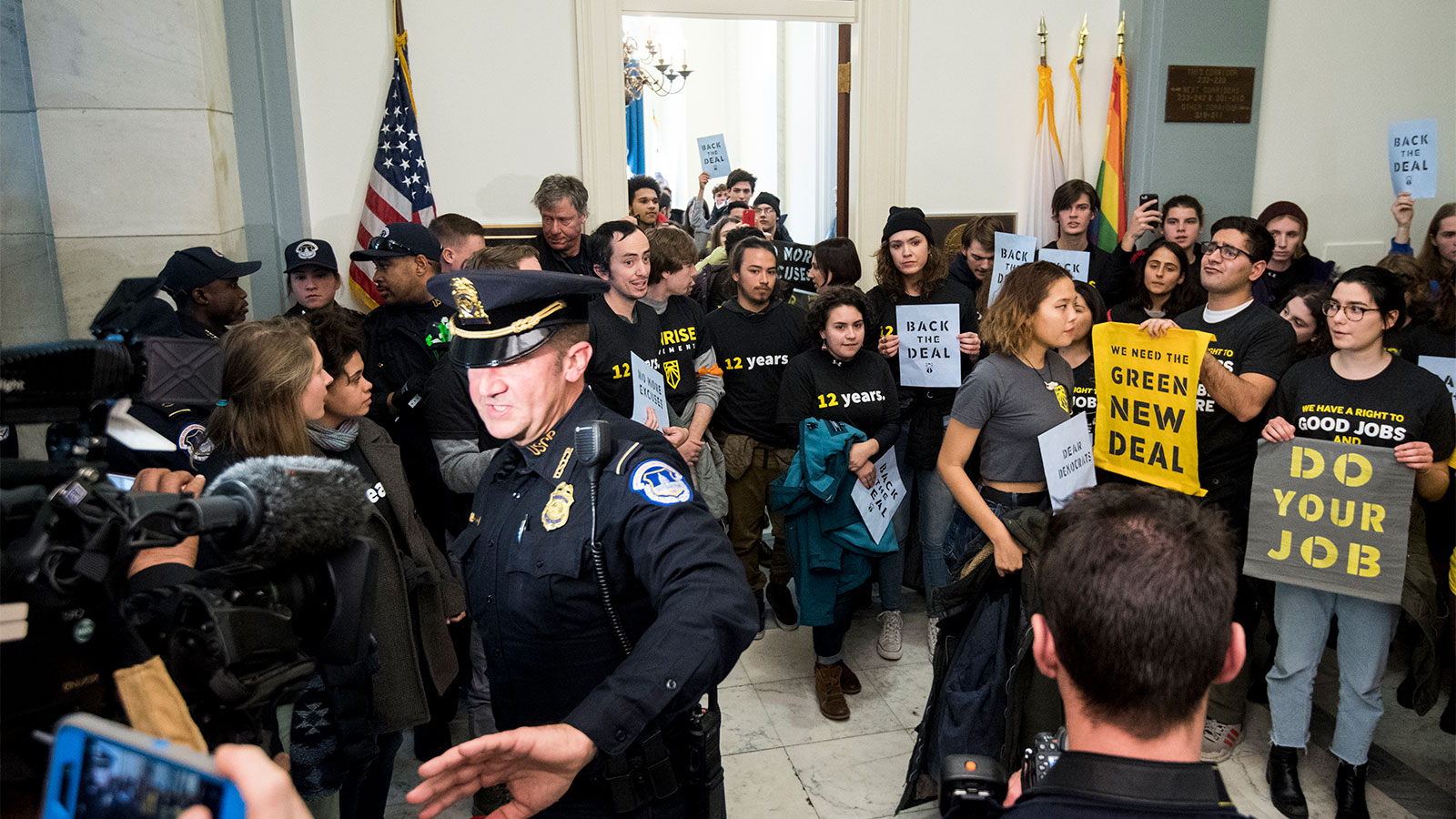
Capitol Police move reporters and protesters back during a Sunrise Movement protest in Nancy Pelosi’s office on December 10, 2018. Bill Clark / CQ Roll Call / Getty Images
For a long time, the label of “environmentalist” didn’t comfortably fit activists who were more concerned with racism and human health than polar bears and endangered species. “People have been trying for decades to make environmental justice a bigger issue, and to build alliances that go beyond the traditional concerns of social justice activists on the one hand, and climate activists or environmental activists on the other,” said Rome, the historian. The coalition for a Green New Deal managed to do what previous generations of environmental activists could not: join union workers, health care advocates, and community leaders together for a common goal, one that was intertwined with concerns around social justice and equality.
Fisher, the University of Maryland sociologist who has spent the last four years interviewing activists about their reasons for protesting, says that the emphasis on race and equality has been growing — even as some of the backlash against Trump is waning. According to Fisher’s data, in April 2017, when 200,000 people took part in the People’s Climate March in Washington, D.C., 47 percent of participants said they were protesting partly for “equality”; 56 percent said they were there because of Trump. By last April, when the COVID-19 pandemic forced most Earth Day celebrations and climate protests online, the number of people who said they were participating for equality had jumped to 57 percent. The president, meanwhile, was only motivating 28 percent of respondents to turn out. “I think people have become a bit inured about the outrageousness that is Trump,” Fisher said.
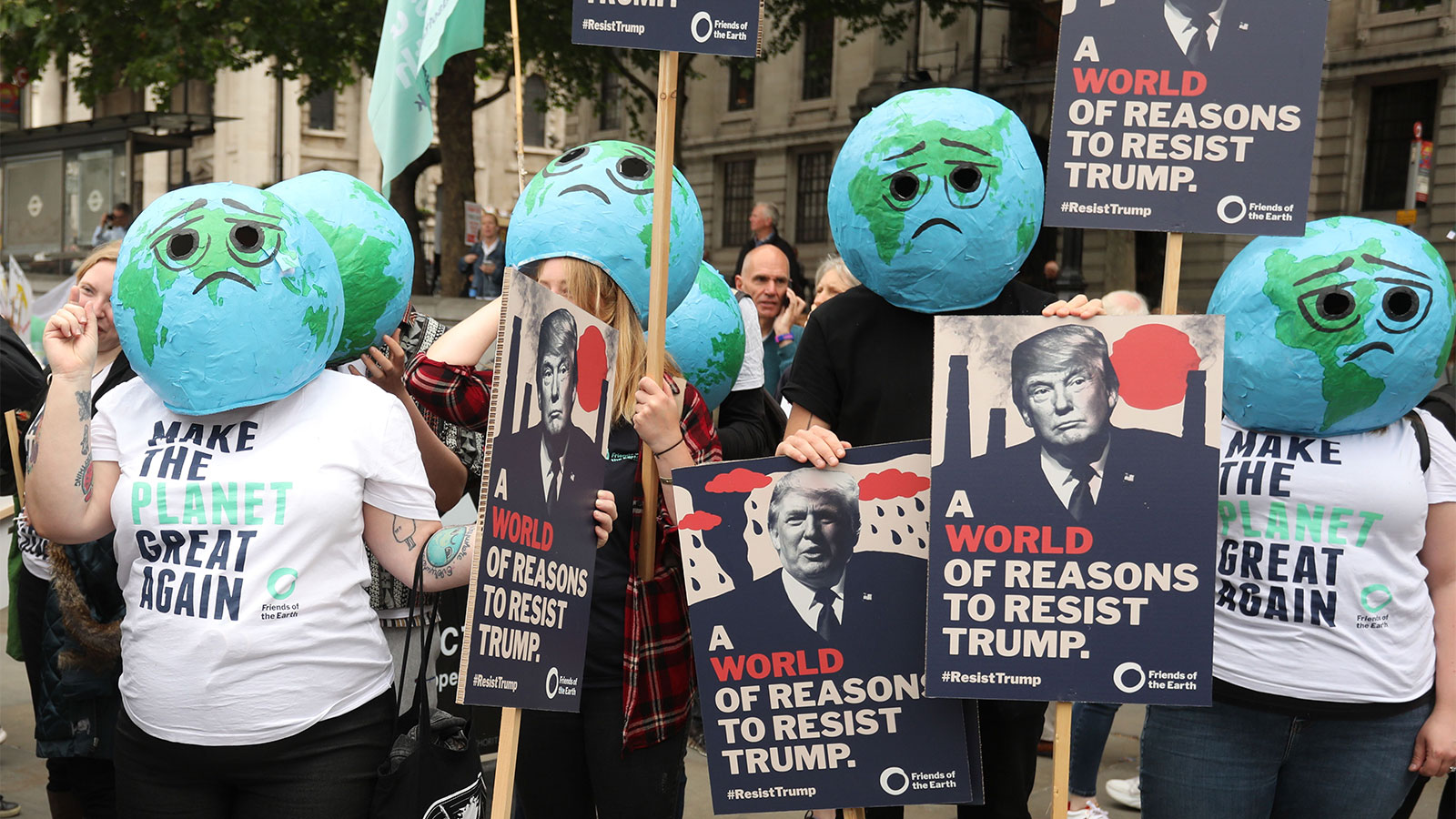
Climate protesters in London demonstrate against Trump’s visit to the U.K. on June 4, 2019. ISABEL INFANTES / AFP via Getty Images
Over the three years between the surveys, there were plenty of other reasons to protest runaway global warming — including an onslaught of climate-charged disasters that were hard to ignore. In 2017 alone, Hurricane Harvey submerged Houston in 50 inches of rain, the worst rainstorm in U.S. history; the monster storm known as Irma was deemed the strongest Atlantic hurricane on record; and Hurricane Maria became the deadliest storm in almost 20 years, killing thousands in Puerto Rico. The flame-ridden West saw its worst wildfires in recorded history last year, burning down thousands of buildings and choking swaths of the country in smoke. The country sizzled through deadly heat waves year after year, sea levels steadily rose, and changing weather patterns parched the continental United States, half of which is now experiencing drought.
It felt as if we were already beginning to live through passages of a dystopian work of climate fiction. The world seemed to be teetering into the new, scary era that scientists had been warning was coming for decades — and continued to warn about in harrowing reports, such as the 1.5 degrees C report from the Intergovernmental Panel on Climate Change and the United States’ Fourth National Climate Assessment, which both came out in 2018.
The Trump administration, in character, tried to bury the assessment by releasing it on Black Friday. And what did the U.S. president have to say about his own administration’s report? “I don’t believe it.”
The horror show in the White House, in tandem with extreme weather catastrophes throughout the world, might have managed to scare more than just young Americans into caring about the climate. A record percentage of the public now grasps that our planet is overheating, and more than a quarter are alarmed about the crisis — double what it was five years ago, before Trump was elected. Climate change became a concern for CEOs and Wall Street as well as for younger Republicans. “They don’t necessarily care about nature, they’re not necessarily tree huggers, but they recognize one of the great challenges of the 21st century is building a sustainable economy and a sustainable society,” Rome said.
Many business leaders, he said, “couldn’t stomach Trump’s denialism.” Corporate executives said that withdrawing from the Paris Agreement was bad for business; automakers sided with California when Trump challenged the state’s stricter fuel efficiency rules. As the federal government backslid on climate, corporate pledges to go “net-zero” emissions starting pouring in (with varying degrees of legitimacy).
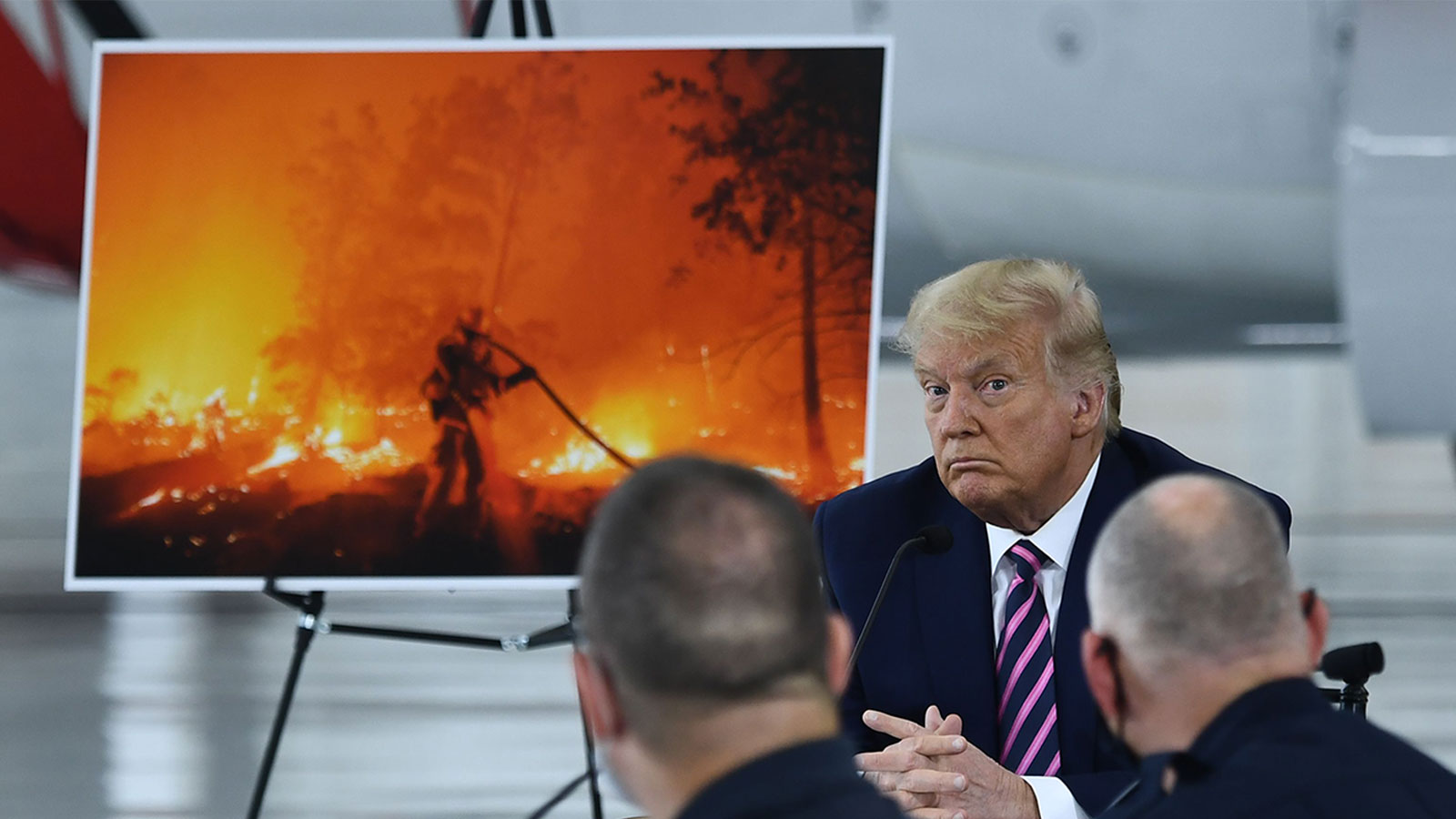
Trump listens to California Governor Gavin Newsom on September 14, 2020, during a briefing on wildfires. BRENDAN SMIALOWSKI / AFP via Getty Images
Corporations alone won’t save us, Rome said, but they are “certainly a sign that there’s a larger awareness out in the world that these challenges are real and they’re not going away.”
Will all this momentum end up inspiring legislation? In early January, run-off elections in Georgia that sent two Democrats to the Senate provided the start of an answer: After Biden’s inauguration, his party will be in control of the House of Representatives, the Senate, and the presidency — a trifecta not seen since President Barack Obama stepped into the White House over a decade ago. Given the extremely narrow margin in the Senate (Democrats hold 50 seats, including two independents, giving them the slimmest edge possible over their Republican counterparts), Biden will not be able to pass anything close to the $2 trillion climate plan he envisioned. But he will, by fits and starts, be able to get some legislation through.
There is some concern that, with a friendly face in the White House, some of the activism that has marked the past four years will begin to trickle away. It’s hard to imagine hundreds of thousands of people turning out for a “March for Science” during a Biden presidency, as they did during Trump’s. Protests and organizing, after all, come in cycles: When activists’ preferred party is in power, they have fewer reasons to take to the streets.
But that doesn’t necessarily mean the momentum behind climate action will fade. “Activism exists on a spectrum,” Fisher said. Organizers can attack a problem from the “outside” — staging a sit-in, for example, or protesting a much-disliked political candidate — or from the “inside,” through lobbying elected officials and joining political campaigns. Many of the climate groups that have emerged over the past four years began on the outside, and then began inching, slowly, toward the inside. “Environmental groups have for years used this kind of combination of tactics,” Fisher said.
Along the way, organizations like the Sunrise Movement have accumulated more political power and media attention than would have previously been thought possible. Last spring, just a year and a half after Sunrise’s sit-in, its co-founder, Varshini Prakash, served on a task force to help the Biden campaign refine its climate plan, rubbing shoulders (via Zoom) with Washington insiders and former Secretary of State John Kerry. But the group intends to keep playing the role of outside agitator as well, and Prakash has said that they will hold the new president accountable. “Our role is to say these campaign promises are great, but we need you to act upon them from day one,” Prakash told Reuters in December.
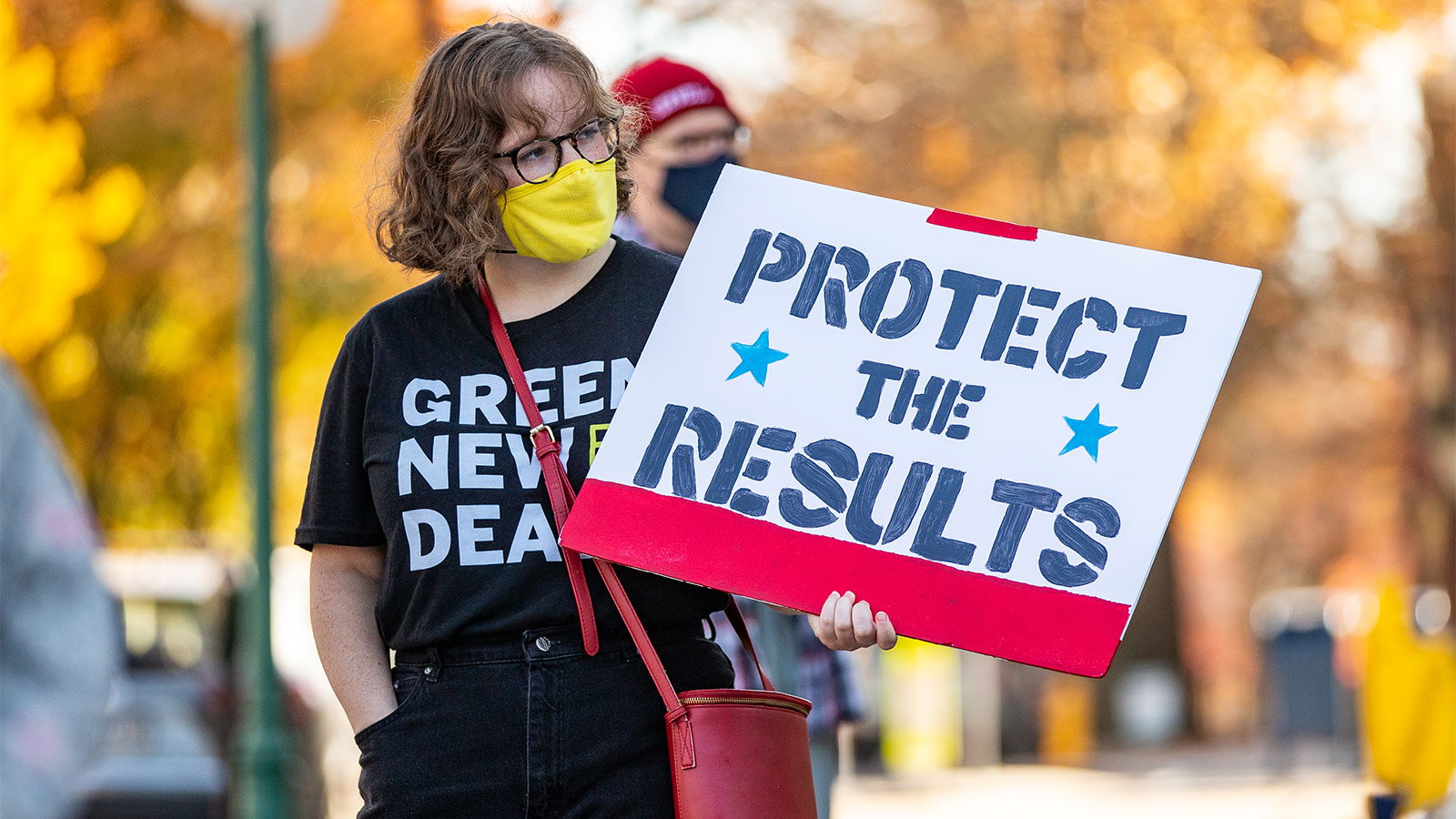
People gather in Lewisburg, Pennsylvania, to celebrate the election of Joe Biden as president of the United States. Paul Weaver / Pacific Press / LightRocket via Getty Images
Some things in the next four years won’t change much. Thunberg will probably continue to skip school — and maybe even college — on Fridays. And even after the best efforts of the Biden administration, it is likely that the U.S. will still not be on track to cut its emissions enough to reach the Paris Agreement’s goal of keeping warming below 2 degrees Celsius. (According to the nonprofit Climate Action Tracker, only a handful of countries in the world, including India, Ethiopia, and the Philippines, are on track to do their part in hitting that mark.)
But Trump’s strange, turbulent, and destructive years in office have given the climate movement something that it didn’t have before: a unified foundation on which to build, and a message that could resonate well beyond those concerned about “the planet” in the abstract.
“If the movement can show that as a fast-food worker, you should be concerned about climate change and all the things that propel it,” Gordon said, “that’s a huge victory.”
